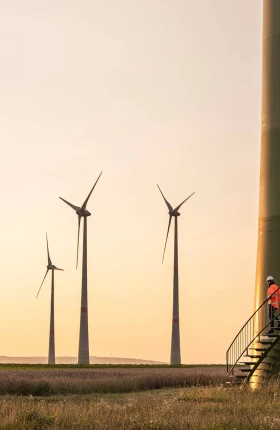Until recently, most business leaders primarily embraced joining the battle against climate change as something they should do as part of their corporate ESG commitments. Now, it’s becoming a crisis they must address to protect their balance sheets and bottom lines. In fact, climate change is quickly emerging as one of the greatest sources of strategic risk facing business leaders.
The pressure to act is coming from many directions. It’s coming from the financial community, which is telling companies it won’t invest if they don’t secure their business models, value chains, and physical infrastructure. It’s coming from governments and governmental bodies—the G20, for example, has issued a framework for companies to disclose climate-related financial risks and the measures they’re taking to mitigate them. And it’s coming from regulators around the world, which are translating these principles into stringent reporting requirements.
Climate catastrophes are also disrupting businesses with growing frequency. Heavy rain caused severe flooding in Germany in July 2021, for example. In parts of two states, floods completely destroyed transportation infrastructure; a German rail provider suffered $1.3 billion in damage to its rail lines. A German coal mine shut down for one month, an auto-parts plant for eight months, and a paint factory for about a year. Climate-related events can also cause havoc in supply chains worldwide. Heat waves in India in early 2022, for example, disrupted not only local businesses, but also global industries such as fashion and consumer goods.
Companies must act now to secure their business models, value chains, and physical infrastructure against climate risk.
Shedding light on the climate-risk exposure of businesses, therefore, has become critical. You need to assess how your business will react under different climate scenarios and across different time periods. What will happen if a flood or intense heat wave forces your factories to close? Does insurance cover this risk? If so, how much of the value of that impact is covered? If you are a food company, are you relying on crops grown in places threatened by drought and intense heat? What will happen if crops do not grow? What will be the impact on the physical assets on your balance sheet?
When you fully understand your risk exposure, you can develop an effective adaptation and resilience strategy . Rising sea levels may mean your manufacturing plants must relocate. You may need alternatives to suppliers whose physical infrastructure is vulnerable. But you might also find there are things you can do to make facilities more secure. The Netherlands, for example, has built a dune system as a buffer between the sea and land to protect businesses and people from rising sea levels.
Collaboration between the private and public sectors is critical. Governments develop national adaptation plans and frameworks for climate-risk assessments. But companies need to allocate capital and resources toward solutions. Companies can mobilize through public-private partnerships that support and incentivize private adaptation and resilience actions that yield both financial returns for their shareholders and socioeconomic benefits for a country or region.
Climate change is such a huge, complex phenomenon that it affects every country and every business. It’s everybody’s problem—and therefore climate-risk assessment, adaptation, and resilience must move to the top of the corporate and government agendas.








